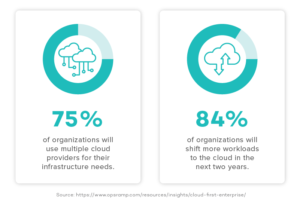Optimizing the Vendor Deal Registration Process through Salesforce
Resellers face unique challenges because they don’t sell their own “stuff.”
Some of our reseller clients regularly represent over 100 vendors. Those vendors can offer anywhere from 2 to 200 products, many of which need to be wrapped in professional services to deliver solutions to their customers. The sales process can be quite complex.
Resellers can’t just do their best to register deals and leave the rest up to fate. They must put intentional, structured processes in place to manage the many moving parts and people involved.
Fortunately, Salesforce can help. Here’s how resellers can utilize Salesforce to optimize their vendor deal registration process and improve their overall business success.
Vendor Deal Registration Challenges for Resellers
The reseller business model looks something like this:
- Make a margin off the products sold (the difference between what the reseller pays vendors/manufacturers and what it can be sold for to the end user)
- Spiffs, rebates, and referral fees from vendors or manufacturers for involving them in deals (if resellers register deals with them before competitors)
- Earn revenue by selling services alongside resold products (value-added resellers)
You can see above (and already know if you’re a reseller) that resellers fall between the manufacturer or distributor and the consumer in the supply chain. As a result, partner referrals and deal registration programs are important to resellers.
Based on the amount of product that they sell from a particular manufacturer or distributor, they qualify for special discounts and incentives or receive margin and deal protections. They also get accelerated support if they run into implementation challenges that need to be addressed immediately.
Resellers’ communication channels and processes related to their partners at the start of the supply chain are essential to their business success.
So, most resellers place a heavy emphasis on registering deals with partners to indicate that they are quoting their products to potential customers. The faster they do it, the more often they do it, and the more efficiently they do it, the more money they make.
The complexity of the problem is compounded by a few key factors:
- Each partner/vendor usually provides their own portal where deal registration is required.
- Sales reps don’t like entering deals in Salesforce, much less another system.
- Either the deal registration happens and Salesforce lags, or vice versa — both having consequences for profitability of the deal, visibility into the pipeline, etc.
- Registrations entered into the portal aren’t visible in their own SFDC, so it may not be clear if a deal is registered, until it becomes clear that it’s not (when a competitor lays claim to it).
To solve the problem, most resellers rely on a team (or teams) of inside sales reps and deal registration reps or alliance managers to handle the rekeying of data from Salesforce into the appropriate dealer portals.
But this solution is also fraught with all kinds of inefficiencies, including:
- Keeping track of logins
- Rekeying data from varied sources including the quote provided by the vendor, the bill of materials, or the data that the rep entered into SFDC
- Managing who did (or didn’t do) what
- Tracking deal registration status (i.e. does the vendor acknowledge that a reseller got there first or did someone else?)
- Validating and proving deal registration status in the event they don’t get credit
- Validating or verifying rebates, spiffs, etc.
Leveraging Salesforce to Optimize the Process
A look at recent reseller trends already show a migration toward cloud solutions that can centralize vendor management and improve workflows for reseller teams.
Salesforce provides many ways for resellers to optimize the process and create a more transparent, efficient operation that delivers a higher volume of registrations and does it more efficiently. Tactics include:
- Tracking Program Details in SFDC – With 10 or more programs to keep track of, it’s easy for anyone on any given day to be confused, seeking insight into how to be compliant with program rules. Tracking program details in SFDC makes this information available whenever it’s needed.
- Automating Login Tracking – Deploy a login manager that can enable the whole team to gain access to vendor portals, depending on their assigned permission to do so. This can empower sales reps to proactively check their own deals in the portal if they are curious about status.
- Automating Tracking of Registration Status – Using machine learning (or even less sophisticated email parsing) reduces the need to keep track of the notifications that come back from partners and lets you know if your registration was successful. Just as importantly, you won’t have to spend time dealing with the rejections.
- Building a Streamlined Workflow – Building a workflow into SFDC gives you the ability to capture all the key details of your partner deals in order to mimic their data requirements on the portal.
- Giving Program Admin Teams Autonomy – Enable your program admin team to administer the program details in SFDC without needing to call your admin and sit in the change control queue for weeks on end, every time a partner changes their data requirements. This enables you to make changes quickly.
We’ve worked with lots of resellers both to commercial and federal customers, to help them automate various parts of their complex business processes, from CPQ to deal registration to streamlining the order management process.








